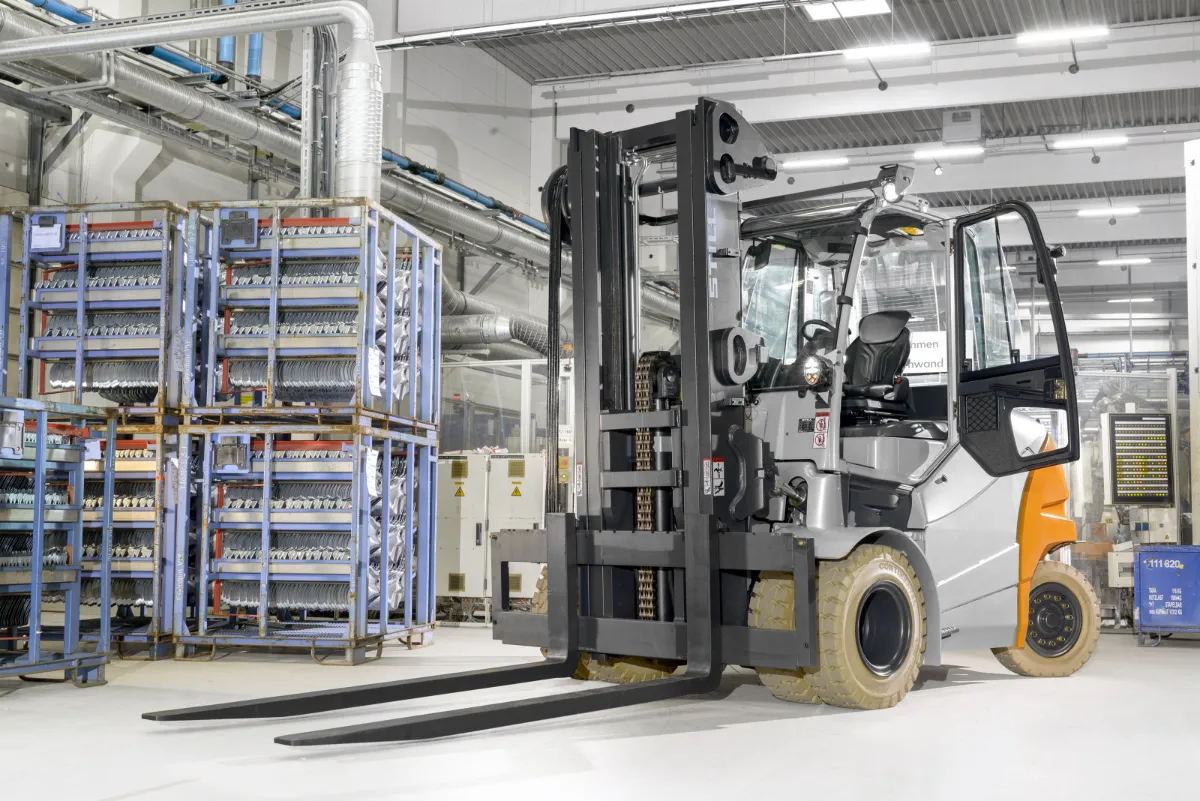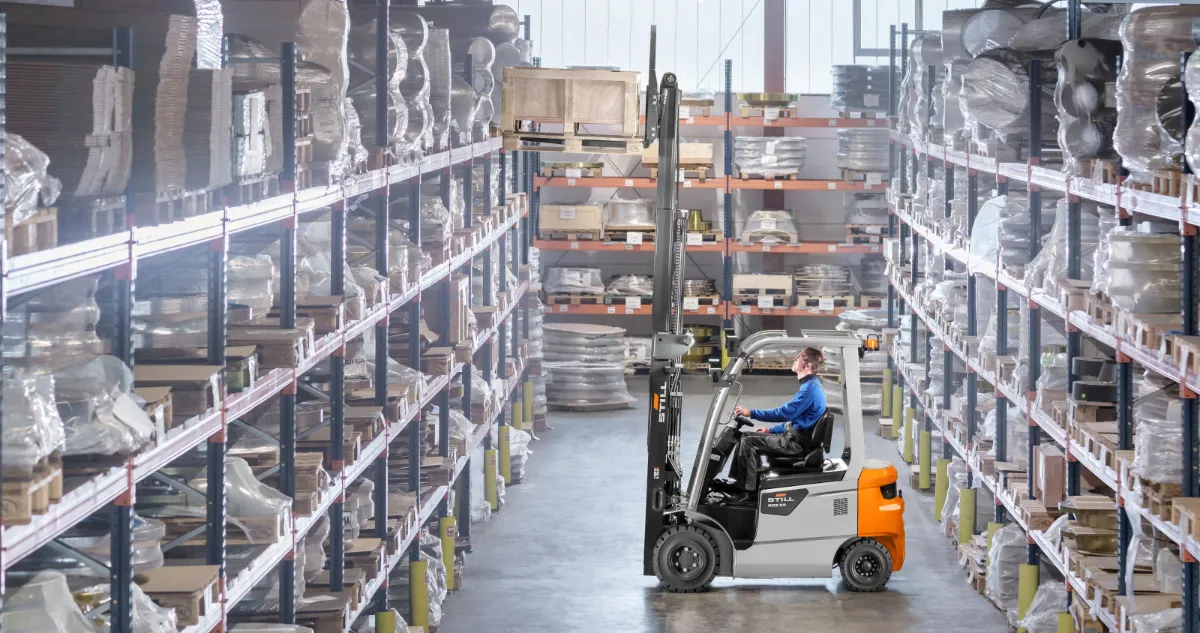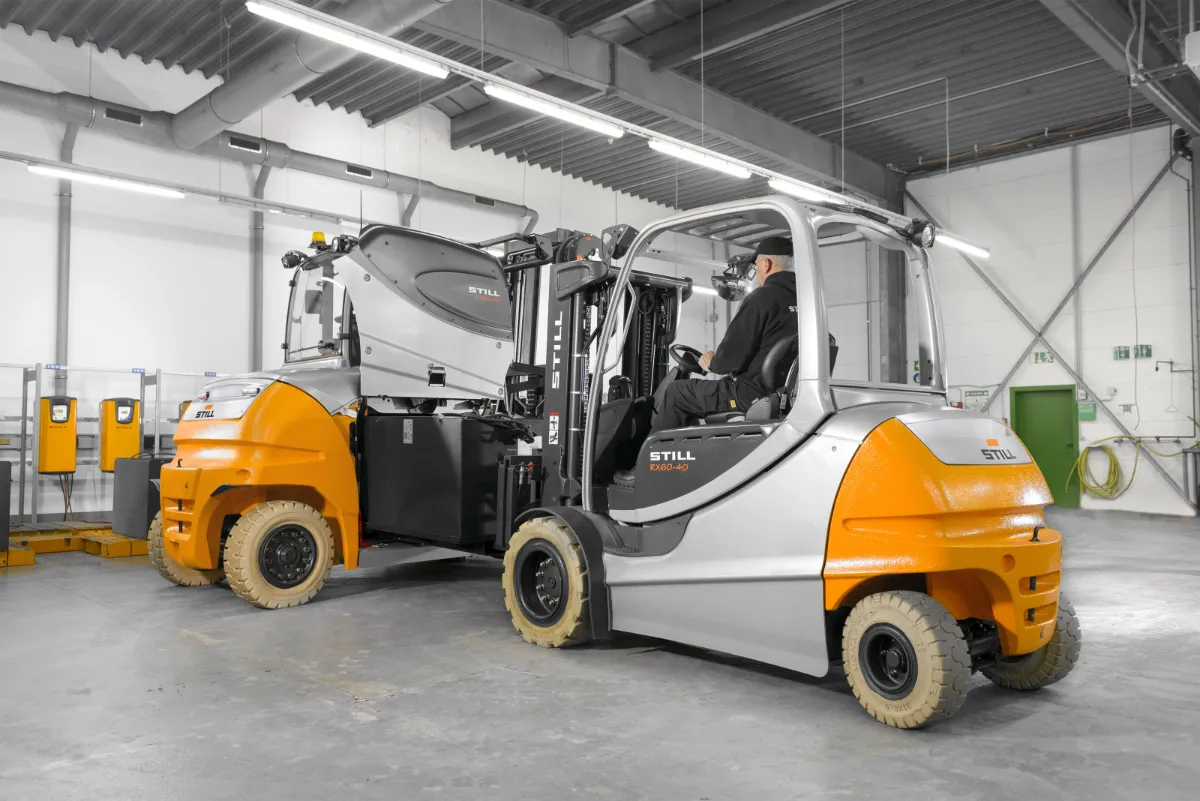Forklifts are essential to business operations, enabling the swift and efficient transport of goods. However, like all machinery, forklifts require regular maintenance to ensure they operate smoothly and have a long service life. Why is forklift maintenance crucial? What are the common causes of forklift malfunctions? And how often should forklifts be serviced? Let’s explore these questions in detail with TCID.
1. The Importance of Regular Forklift Maintenance
1.1. Benefits of Forklift Maintenance
Regular forklift maintenance is critical to ensuring safe, efficient, and durable operation. Regularly maintaining your forklift brings numerous practical benefits, including:
- Extending the Forklift’s Lifespan: Maintenance helps identify and fix issues before they become serious, thereby extending the life of your forklift.
- Ensuring Workplace Safety: A well-maintained forklift reduces the risk of workplace accidents for operators and others nearby.
- Improving Operational Efficiency: Maintenance helps keep the forklift running smoothly, avoiding disruptions due to breakdowns and ensuring consistent work progress.
- Saving on Repair Costs: Early detection and resolution of issues can save significant repair costs down the line.

1.2. Common Causes of Forklift Malfunctions
In addition to natural wear and tear, several common causes can lead to forklift malfunctions:
- Improper Operation: Incorrect driving techniques, overloading, or moving on unsuitable terrain can damage the forklift.
- Using Low-Quality Replacement Parts: Non-genuine, low-quality parts can cause further damage to other forklift components.
- Neglecting Regular Maintenance: Failing to change oil, air filters, or fuel filters regularly can reduce efficiency and lead to potential damage.
- Harsh Working Environments: Dusty, wet, or high-temperature environments can also affect the lifespan of a forklift.

1.3. Recommended Maintenance Intervals
Depending on usage frequency and operating conditions, customers can choose to maintain their forklifts in two ways:
- By Operational Hours: Maintenance after every 300, 600, 900, or 1200 hours of operation, etc.
- By Operational Months: Maintenance after every 1.5, 3, 4.5, or 6 months of operation, etc.
In addition to regular maintenance, customers should frequently check the condition of their forklifts and have them inspected immediately if any abnormalities are detected.
In summary, regular forklift maintenance plays a vital role in extending its lifespan, ensuring workplace safety, and saving on repair costs for businesses. Therefore, it’s essential to establish a suitable maintenance schedule and choose a reputable service provider to ensure the best maintenance outcomes.
2. Proper Forklift Maintenance Procedures
Step 1: Clean the Forklift
Before beginning maintenance, remove dirt, grease, and grime from the forklift’s surface. Use a clean cloth, brush, and air compressor to clean the entire surface, including the undercarriage and engine compartment. Be sure to shield electronic components before cleaning with water to avoid causing short circuits.
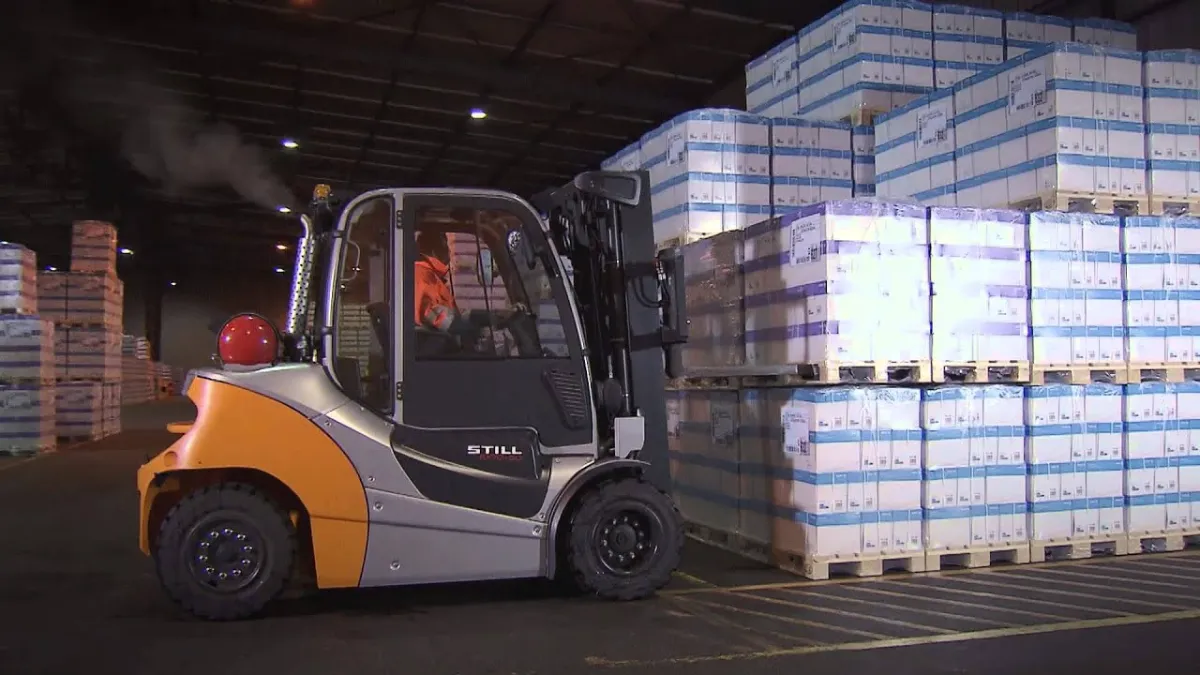
Step 2: Check and Maintain the Battery
This step is especially crucial for electric forklifts as it ensures the battery functions correctly. First, check the electrolyte level in each cell of the battery and add distilled water if necessary. Next, clean the battery terminals with a specialized solution to remove dirt and corrosion. Check the battery cables for any looseness or oxidation, tightening or replacing them as needed. Finally, fully charge the battery and ensure the automatic shut-off function works correctly to prevent battery degradation.
Step 3: Lubricate Moving Parts
Lubricating moving parts reduces friction, wear, and tear, extending the lifespan of the machine components. Lubricate areas such as wheels, joints, swivels, the lifting system (including cylinders, chains, cables), bearings, and any points noted in the forklift’s user manual.
Step 4: Inspect the Hydraulic System
This step ensures that the hydraulic system operates smoothly, efficiently, and without leaks. First, check the hydraulic oil level in the reservoir, adding or replacing oil as necessary (according to recommended intervals). Next, inspect the hydraulic lines for leaks, cracks, or breakages, and replace them immediately if damage is found. Lastly, check the operation of the hydraulic pump, control valves, and hydraulic cylinders to ensure they function correctly.
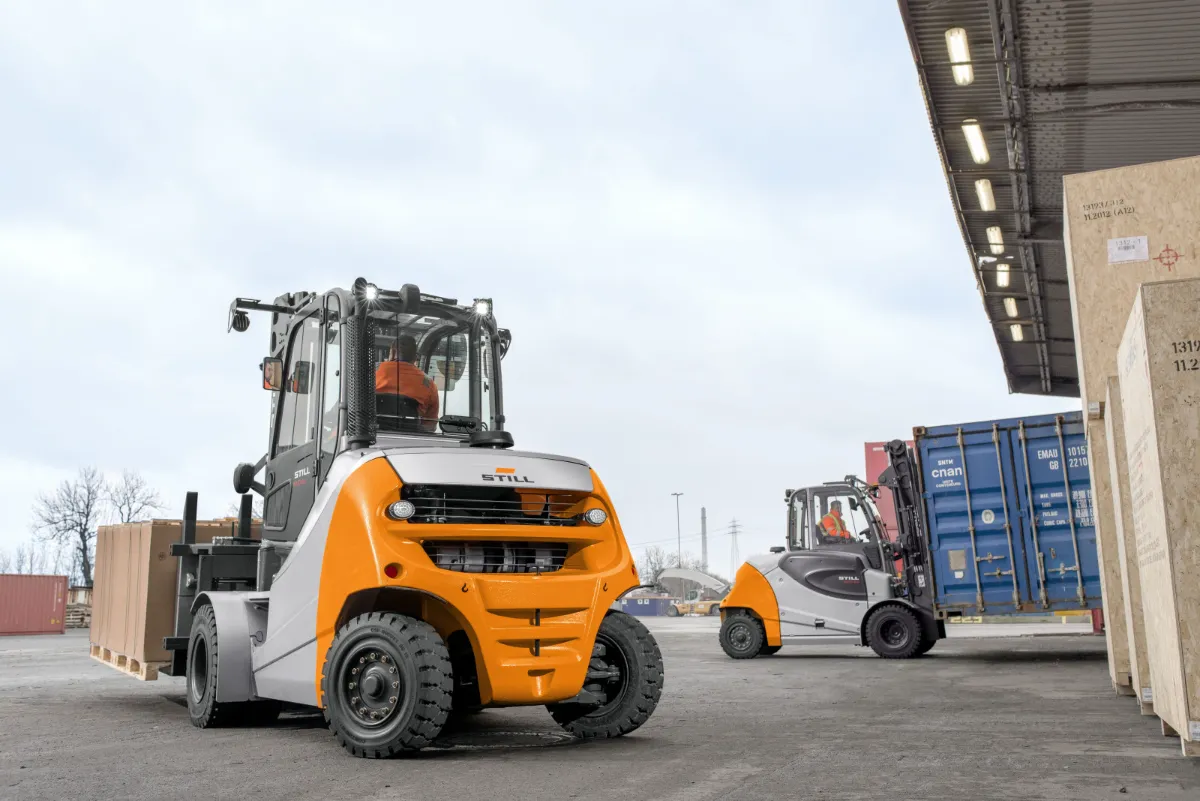
Step 5: Check and Maintain the Engine
Engine maintenance is crucial for ensuring that the engine operates powerfully and reliably. First, check the engine oil level, adding or changing oil as necessary (according to the recommended schedule). Next, replace the oil filter, air filter, and fuel filter according to the manufacturer’s recommendations. Finally, check the engine cooling system, add coolant if necessary, and clean the radiator regularly.
Step 6: Check and Maintain the Electrical System
Maintaining the electrical system ensures it operates safely and reliably. Inspect the battery, charging system, wiring, horn, lights, switches, and other components to ensure they function properly. Clean electrical terminals and tighten connections to ensure stable power transmission. Address any issues such as frayed or broken wires to prevent short circuits.
Step 7: Inspect the Safety Systems
This step is critical for ensuring the safety of the operator and the goods. Inspect the brake system (including foot brake and hand brake) for effectiveness and check that the brake pedal meets safety standards. Inspect the steering system for any play in the steering wheel to ensure precise movement. Check all lights (headlights, taillights, turn signals) to ensure safe operation in low light conditions. Test the horn to ensure it functions correctly. Finally, check the seat belts, seats, and cabin (if equipped) to ensure the operator’s safety.
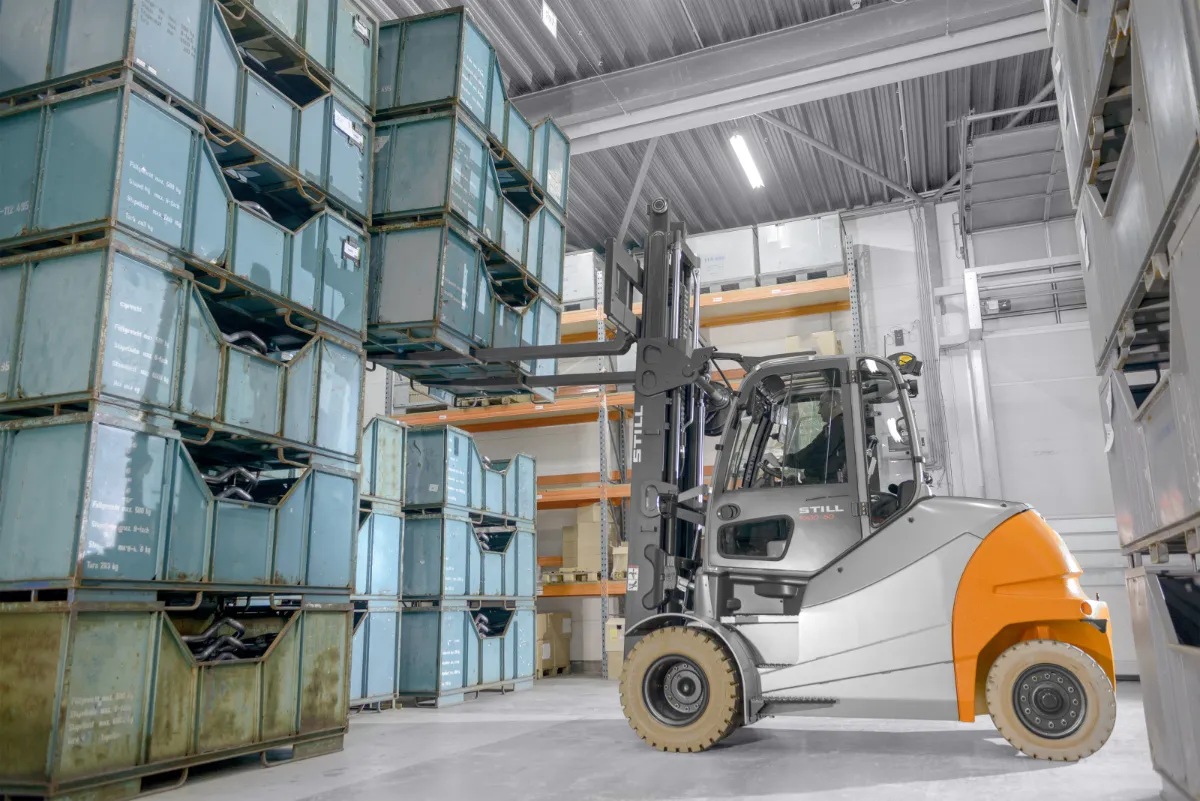
Step 8: Check the Tires
The final step is to inspect the tires to ensure safe and stable movement. Check tire pressure and inflate if necessary. Inspect tire wear and replace them when necessary to ensure good traction. Check for any tears, cracks, or foreign objects embedded in the tires, and replace them if needed.
By following these eight maintenance steps, your forklift will operate more durably, efficiently, and safely, extending its lifespan and ensuring safety during use.
3. Important Tips for Operating Forklifts
In addition to regular maintenance, proper forklift operation is crucial in extending its lifespan and ensuring the operator’s safety. Here are some essential tips for operating a forklift:
- Conduct a General Inspection: Ensure you check oil levels, fuel, coolant, tire pressure, brake systems, horn, lights, lifting systems, and other key components before starting the forklift.
- Survey the Surrounding Area: Before moving the forklift, carefully observe the area to ensure there are no obstacles or pedestrians.
- Adjust Mirrors: Adjust the rearview mirrors to provide the best possible visibility of the rear and sides of the forklift.
- Move at an Appropriate Speed: Always move at a moderate speed, especially when turning, climbing, or descending slopes.
- Maintain a Safe Distance: Keep a safe distance from other vehicles, particularly in confined warehouse spaces.
- Use the Horn Effectively: Use the horn to alert pedestrians and other vehicles when necessary.
- Avoid Overloading: Never exceed the forklift’s maximum load capacity.
- Properly Lift and Lower Loads: Ensure loads are balanced on the forks and securely fastened before moving.
- Exercise Caution When Reversing: Be extremely careful when reversing the forklift, and use the horn and signal lights when necessary.

By following these tips, you can help ensure your safety and the safety of those around you, while also extending the lifespan and operational efficiency of your forklift.
4. Conclusion
Proper forklift maintenance is crucial for businesses to maintain high work efficiency and ensure workplace safety. Adhering to regular maintenance schedules, thoroughly inspecting each component, and promptly addressing minor issues will prevent major breakdowns, saving time and costs in the long run.
At TCID, we offer forklift maintenance services at competitive rates, with professional and dedicated technicians. If you need forklift maintenance or wish to purchase or rent a forklift, electric or otherwise, please contact us immediately.


